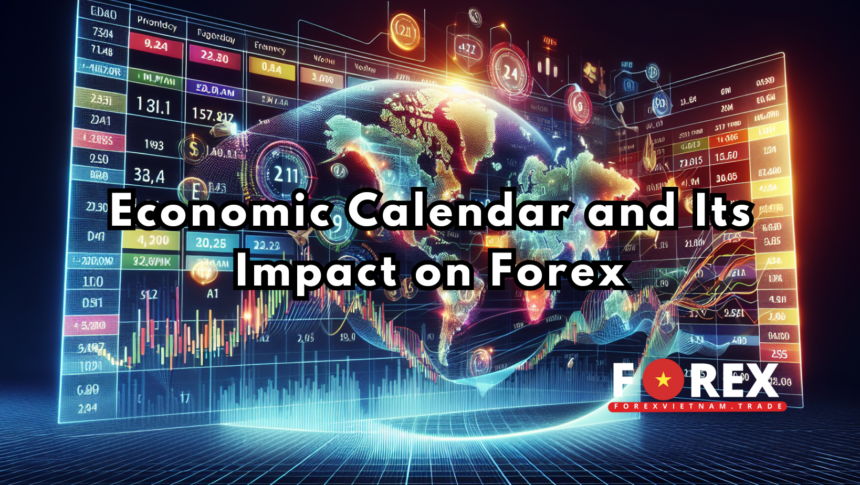An economic calendar is a vital tool for traders, especially in the Forex market, where global events and economic indicators can significantly influence currency prices. The economic calendar provides a schedule of important data releases and events, such as interest rate decisions, inflation reports, employment numbers, and gross domestic product (GDP) updates. Understanding how to interpret these events and predict their potential impact on currency movements is essential for anyone looking to succeed in Forex trading.
In this article, we’ll dive into what an economic calendar is, the key events to watch for, and how traders can use this information to make informed decisions.
1. What is an Economic Calendar?
An economic calendar is a tool that displays upcoming economic events and data releases, usually in a format organized by date and time. Each event typically has a description, the previous data release, expected or forecasted numbers, and actual outcomes once they’re released. Many trading platforms and financial websites offer economic calendars, providing traders with essential information to keep up with economic trends.
For Forex traders, this calendar acts as a roadmap for understanding potential market volatility. By knowing when major events are scheduled, traders can prepare for price movements in currency pairs that may result from these announcements.
2. Why is the Economic Calendar Important in Forex?
Currency values are heavily influenced by economic stability, growth indicators, and monetary policy. Since the Forex market operates globally and is decentralized, it is influenced by economic events from all major economies, including the United States, European Union, Japan, and China. The economic calendar helps traders stay on top of these events, enabling them to anticipate changes in currency trends and adjust their positions accordingly.
For example:
- A positive employment report from the U.S. might strengthen the U.S. dollar.
- A central bank’s decision to raise interest rates could boost a currency, as higher rates tend to attract foreign investment.
Staying informed on these events allows traders to make more strategic and timely decisions.
3. Key Economic Events to Watch
There are several high-impact events and indicators on the economic calendar that Forex traders should pay special attention to. These events can be divided into several categories:
a) Interest Rate Decisions
- Central banks, such as the Federal Reserve, European Central Bank, and Bank of Japan, hold meetings to determine interest rate policies. Changes in interest rates directly impact currency values, as higher interest rates typically attract foreign investment, boosting the currency’s value.
b) Employment Reports
- Employment data, especially non-farm payrolls (NFP) from the United States, are key indicators of economic health. Higher employment rates are generally seen as a positive economic signal, leading to stronger currency performance.
c) Inflation Reports (CPI and PPI)
- Consumer Price Index (CPI) and Producer Price Index (PPI) are indicators of inflation. Central banks monitor inflation to decide whether to adjust interest rates. Rising inflation may prompt a central bank to raise interest rates, leading to an increase in currency value.
d) Gross Domestic Product (GDP)
- GDP measures the total value of goods and services produced by a country. A higher-than-expected GDP growth rate signals a strong economy, often resulting in a stronger currency.
e) Retail Sales and Consumer Spending
- Retail sales data reflects consumer spending trends. A rise in retail sales is usually a sign of economic strength, which can positively impact a currency.
f) Geopolitical Events and Trade Policies
- Political events such as elections, trade agreements, or conflicts can also impact currency markets. Uncertainty from political instability often weakens a currency, while stability can strengthen it.
Each of these events may have different levels of impact on currency pairs, depending on the expectations of the market and the specific economy affected.
4. How to Interpret the Economic Calendar for Forex Trading
Interpreting the economic calendar requires a bit of analysis and understanding of the potential impacts of each event. Here are some steps to help you make the most of the calendar:
a) Pay Attention to the “Expected” vs. “Actual” Figures
- Economic calendars often provide an “expected” or “forecasted” figure, which is the market’s consensus on the likely outcome. The “actual” figure is updated once the data is released. If the actual number is better than expected, the currency may strengthen; if it’s worse, it may weaken.
b) Know the Impact Level
- Events on the calendar are usually marked with impact levels, often categorized as low, medium, or high impact. High-impact events, like central bank decisions or NFP releases, typically cause more market volatility and are therefore important to watch closely.
c) Follow Trends and Sentiment
- Understanding the broader market sentiment helps in predicting how traders might react to a specific event. For example, if inflation is already rising and the market expects an interest rate hike, currency values may already reflect this sentiment, meaning any deviation from expectations could cause larger reactions.
d) Use Technical Analysis in Combination with Economic Data
- While economic events provide the “why” behind price movements, technical analysis can help with the “when.” Combining economic calendar insights with chart patterns, support and resistance levels, and indicators can help traders identify ideal entry and exit points.
5. Trading Strategies Using the Economic Calendar
There are several trading strategies traders employ to capitalize on economic calendar events:
a) News Trading
- News trading is a strategy that involves trading around major economic releases. For instance, if you anticipate that the U.S. employment report will be better than expected, you might consider going long on USD-based pairs.
b) Trading Volatility Spikes
- Some traders specialize in trading during volatility spikes that occur immediately after high-impact data releases. This requires quick decision-making and sometimes automation, as currency prices can change within seconds after data is released.
c) Position Trading
- For longer-term traders, the economic calendar provides insight into potential economic trends. By analyzing data trends over time, such as a series of positive GDP reports, position traders can make longer-term investments based on the anticipated growth of a currency.
6. Advantages of Using the Economic Calendar in Forex
- Informed Decision-Making: Traders can make more calculated decisions by being aware of potential economic impacts on currencies.
- Better Risk Management: By knowing when high-impact events are scheduled, traders can adjust their risk management strategies, such as reducing leverage or setting tighter stop-loss levels.
- Enhanced Predictability: The economic calendar allows traders to anticipate volatility periods, enabling them to time their trades better and avoid unexpected losses.
Conclusion
The economic calendar is an indispensable tool for Forex traders. It helps to keep traders informed about upcoming events that can influence the market, allowing them to make better trading decisions. By understanding the importance of each event and its likely impact on currency pairs, traders can develop strategies that take advantage of economic data releases, from short-term news trading to long-term position trades. Staying updated with the economic calendar is a critical component of success in the dynamic Forex market.







